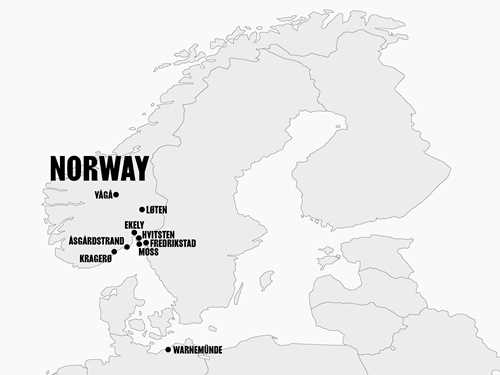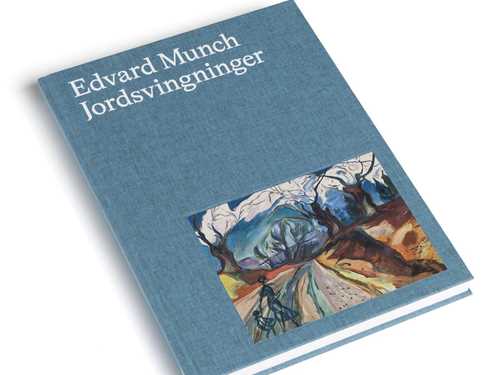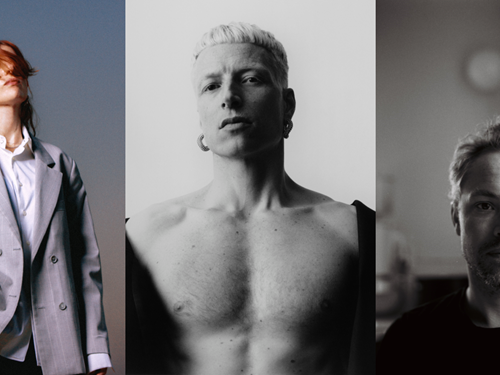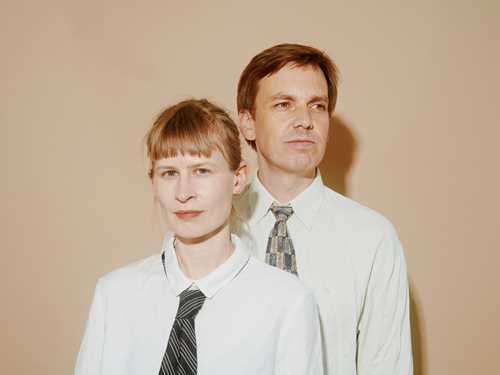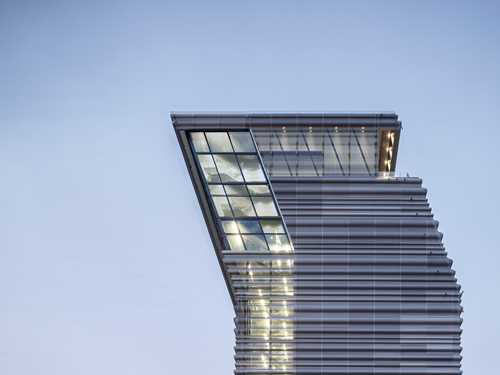8 highlights in the Trembling Earth exhibition
Experience Edvard Munch in a new way, listen to music while you look, and use the rare opportunity to see eleven of Munch's biggest paintings in one room.
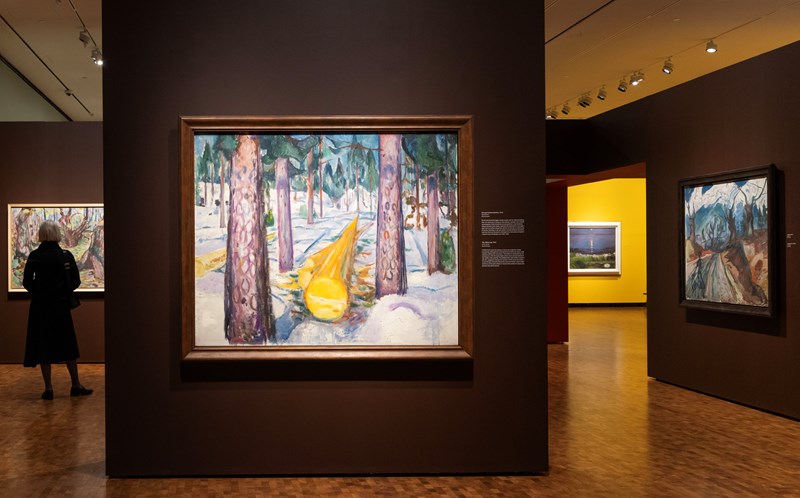
Photo: Ove Kvavik © Munchmuseet
1. Discover a New Side of Munch’s art
Trembling Earth is the first exhibition to highlight the central role of nature in Edvard Munch’s work. Many people know Munch mainly as a figure painter, a unique portrayer of the human spirit. Here, you can see how he captured the unique qualities and inner life of trees, stones, weather and season with the same level of insight and originality as he painted people’s mental states. The sheer variation of colours and expression throughout Munch’s nature paintings is reflected in the special architectural design of manthey kula.
2. Music While You Look
You can contemplate Edvard Munch’s visions of nature and the cosmic cycle accompanied by commissioned sound works by renowned Norwegian artists. Deathprod (Helge Sten) has created a 30-minute electronic work, Let Me Be Forever Animal, inspired by Edvard Munch’s motifs for the University Aula. As you absorb the forces of nature running through The Sun, The Scream and Angst, you can sit on our specially designed benches and listen to the five minute Join the Sound by the experimental duo Lost Girls (Jenny Hval and Håvard Volden). Find out more and read interviews with Deathprod and Lost Girls about the project.
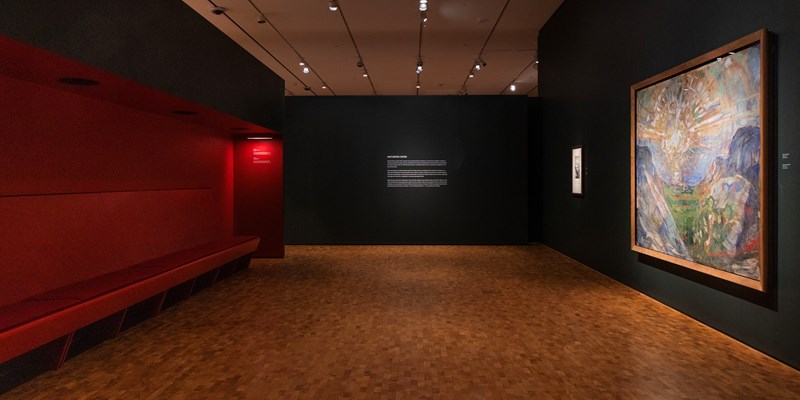
Photo: Ove Kvavik © Munchmuseet
3. Discover Munch’s Cosmic World View
Munch was fascinated by philosophy, religion and science. Throughout his life he worked with motifs dealing with transformation – including people being buried in the earth, decomposing and then fertilizing new growth and new life. One process that intrigued Munch was ‘crystallisation’, a pseudo-scientific theory popular in the early 20th century that believed life could generate and evolve out of inorganic material such as rock. In the exhibition section ‘In a Cosmic Cycle’, you can go deeper into Munch’s cosmic world view and examine some of the forward-thinking scientific journals which he kept in his book collection.
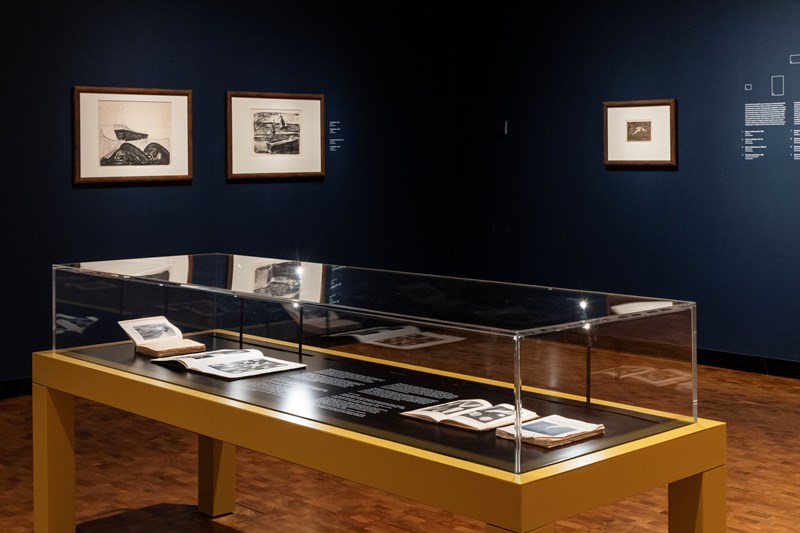
4. Experience Eleven of Munch’s Biggest Paintings All in One Room
From 1909–16, Munch worked on trying to finish his biggest ever commission: a series of monumental wall paintings for the University of Oslo’s new assembly hall (Aula). Several artists competed for this prestigious honour, and Munch made hundreds of sketches and drafts. In 1913 he exhibited several drafts in half-scale – first in Berlin, and the following year in Frankfurt and Kristiania (the former name of Oslo), which helped him to win the commission. This is the first time in over 100 years this version of Alma Mater has been seen unrolled across a frame.
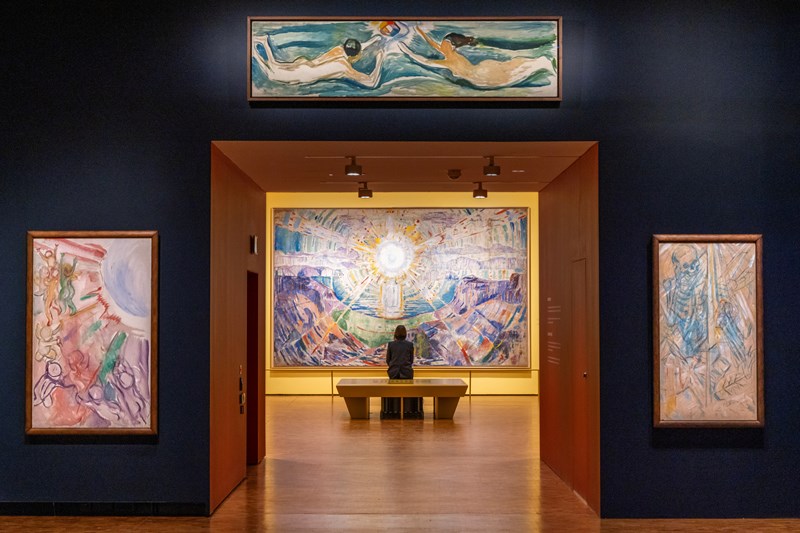
Photo: Ove Kvavik © Munchmuseet
5. A Fresh Look at Two of Munch’s most Iconic Motifs
Munch painted The Sun and The Scream around 20 years apart. By exhibiting these two iconic paintings in the same space, which also includes Anxiety, Trembling Earth throws new light on both. The Scream and Anxiety have traditionally been interpreted as images of mental states, but when placed alongside The Sun, their portrayal of nature comes into clearer focus. Despite the differences in size, medium and technique, the motifs capture nature’s existential impact on humans in a radical way.
6. Exciting Loans and Munch Works RARELY Appearing at the Museum
Most of the Edvard Munch paintings in Trembling Earth come from the collection at MUNCH, including many that are rarely exhibited. In addition, we have loaned around 23 paintings and a drawing from various institutions both in Norway and abroad, including the Finnish National Gallery Ateneum Art Museum, Helsinki, Canica Art Collection, Dallas Museum of Art, Kunsthalle Mannheim, Museum of Modern Art, New York, Musée d’Orsay, Paris, National Museum, Oslo, Christen Sveaas’s Art Collection, Von der Heydt-Museum, Wuppertal, and various private collections.
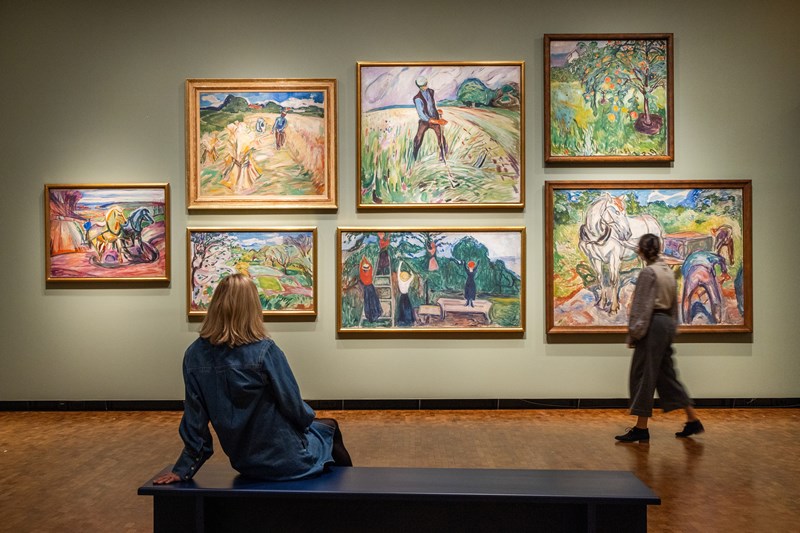
Photo: Ove Kvavik © Munchmuseet
7. Surround yourself with nature in all its forms and variations
The paintings arranged in Trembling Earth’s eight rooms will enfold you in a rich variety of shapes, colours and atmospheres. Munch was fascinated by nature’s variation and diversity. Share that wonder with him among his depictions of mysterious forests, rocky seashores, stormy seas, sun-drenched beaches, fertile fields and blooming orchards. In all these scenes, nature is much more than just a pretty backdrop or distant landscape – it’s vibrating and pulsating with life.
8. See the Places Which Meant So Much for Munch – through His Eyes
Certain places where Munch lived or went on holiday crop up again and again in his art. In the section ‘Chosen Places’, you’ll get to know three of these locations and their unique visual reference points. Here you’ll see Åsgårdstrand and Hvitsten in Norway, and Warnemünde on the Baltic coast, in different seasons of the year, at different times of day and from a variety of viewpoints. Together, Munch’s paintings of the places he knew best are a reminder of the power of seeing with fresh eyes.
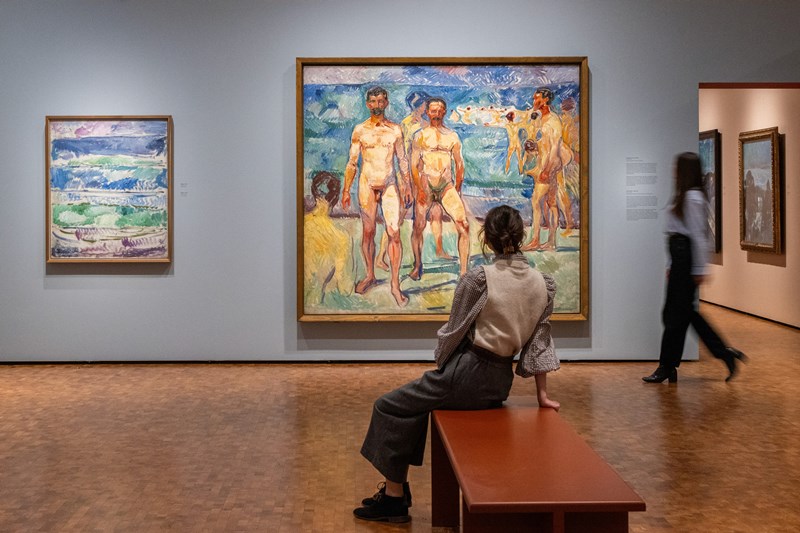
Photo: Ove Kvavik © Munchmuseet
